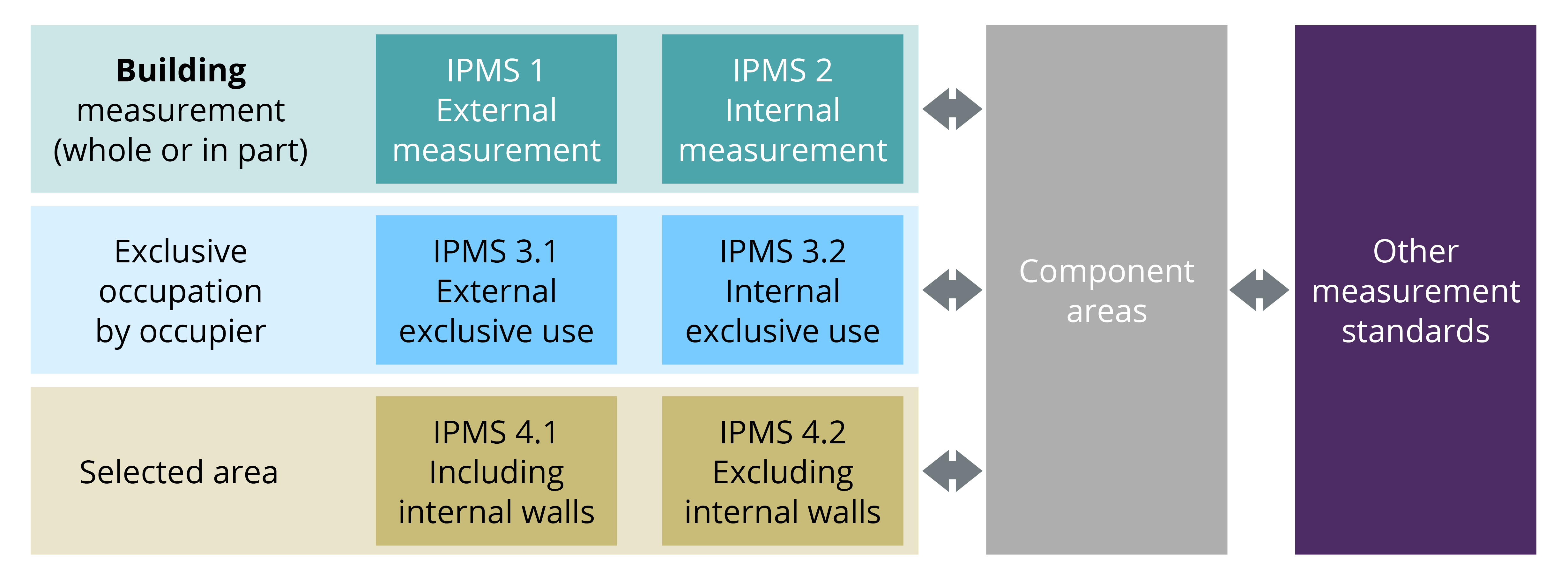
As an overarching standard for all buildings, the forthcoming IPMS All Buildings is a culmination of work by the International Property Measurement Standards Coalition (IPMSC) over the past ten years.
When founded, the coalition brought together built environment organisations from around the world to help align measurement practices in a global investment environment. It produced standards for measuring office, residential, industrial and retail buildings.
It had become clear that a global standard was necessary to ensure fairness and transparency for all stakeholders. Research from JLL conducted for RICS showed that differing measurement standards between regions could cause variance of up to 24% in floorspace. RICS meanwhile found that, when it came to residential property, the discrepancy could be as much as 58.21%.
RICS was a founding member of the coalition that now includes more than 80 professional and not-for-profit bodies, representing a wide variety of nations and disciplines.
IPMS All Buildings
Many market participants have been awaiting an all-buildings standard before adopting IPMS, according to the executive secretary of the IPMSC Standards Setting Committee (SSC) and International Valuation Standards Council (IVSC) director of technical standards Alexander Aronsohn. IPMS All Buildings will therefore replace the previous asset-specific standards, making it more user-friendly and enabling easier comparison between buildings.
The box and figure below show how IPMS All Buildings relates to other measurement standards. IPMS 1 External Measurement and IPMS 2 Internal Measurement remain effectively the same in the all-buildings standard, although they have been simplified and the way they should be used has been clarified.
Structure of IPMS All Buildings and relationship to other standards
-
IPMS 1 and IPMS 2 are external and internal measurements respectively for a whole or part of a building.
-
IPMS 3.1 and IPMS 3.2 are external and internal measurements respectively required for exclusive occupation.
-
IPMS 4.1 and IPMS 4.2 are internal measurements required for selected areas, including internal walls and columns and excluding walls and columns respectively.
The use of component areas is optional; however, they enable analysis of a building and can also be used to convert between IPMS and other standards.

IPMS 4.1 and IPMS 4.2 measurements of a selected area will be of particular relevance to RICS members. These categories enable them to apply IPMS to an area in a multi-occupancy building let to one occupier, for instance.
The two measurements can also be used to compare similar spaces, such as patient rooms in a hospital. The provision through IPMS to measure selected areas provides sufficient flexibility to bring measurements into line with an instruction, so RICS members can compare previous measurements with IPMS on a like-for-like basis.
While a unit of measurement is basically the same all over the world, what makes a difference in measuring an asset is what is included in or excluded from it. IPMS therefore uses component areas, which Aronsohn describes as the 'Lego bricks' of the standards.
These components can be more easily translated into different standards around the world, so members can report easily in whatever form a stakeholder prefers, whether in local standards, IPMS, or both.
'RICS members can compare previous measurements with IPMS on a like-for-like basis'
Looking at building use
RICS head of property standards Paul Bagust says the need for IPMS across all markets has never been greater. 'Pretty much any organisation, whether a hospital or an office, will be looking at its space requirements,' he says, in light of the changes prompted by the pandemic and the imperative for sustainability. Measurement underpins all of this, he adds: 'You can't make strategic decisions in real estate without understanding the basics – how big is this building? How much space do we use?'
That strategic aspect is vital for all stakeholders, from investors to facilities managers. Aronsohn for instance foresees an increase in office measurements as investors and occupiers reconsider their space. This reflects a move away from minimising space per occupant to a more nuanced, activity-based approach that focuses on maximising performance.
It's an approach that ties in with RICS' forthcoming International Building Operation Standard: (IBOS). In this framework, measurement is a starting point for understanding the way a building is used and how well it performs, which is particularly important when considering energy efficiency.
Promoting international collaboration
Bagust hopes that IPMS will show the value of global coalitions in sharing good practice and encouraging adoption.
The first government adoption of the original IPMS was in 2013 by the Dubai Land Department, which was keen to improve transparency in the region. The UK government, Jamaica's National Land Agency and Housing New Zealand were among the bodies and governments to follow in committing to implementation.
Major businesses signed on as partners, agreeing to help establish support for IPMS. Between them, these cover many fields including consultancy, architecture, academia, construction, corporate occupation, data provision and investment.
IPMSC secretary-general and Israel IVS forum director Ron Cohen says the focus should now be on spreading the word around the world, and being clear that the new suite represents an international effort between multiple bodies and regions rather than being solely for RICS members. He foresees further agreements with international organisations; discussions with the OECD about promoting IPMS more widely are soon to begin, for example.
Aronsohn adds that the make-up of the IPMSC is a key strength. Partners include the Building Owners and Managers Association International, the China Institute of Real Estate Appraisers and Agents, the International Federation of Surveyors, the Council of European Geodetic Surveyors, and senior participants from facilities management, architecture, valuation structural engineering and building surveying. These stakeholders clearly place considerable importance on international measurement standards.
The IPMSC website is currently being updated, and members are encouraged to visit in the coming months to see the changes made and new information added.
Nothing is possible in the built environment without accurate measurement from construction to valuation, Aronsohn emphasises. If that information is inaccurate at source then it affects the whole chain of value – hence the critical importance of robust international measurement standards.
For questions about IPMS, please contact the RICS Standards team
Related competencies include: Measurement

.png)